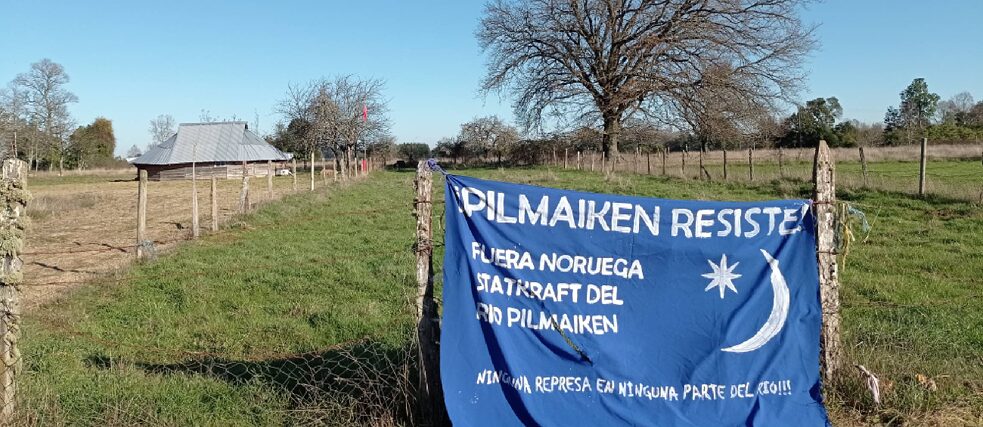Interview with Consuelo Terra and Greta di Girolamo
She is like the Mapuche Princess Mononoke

How did you find out about your story’s protagonist?
In the context of a journalistic research for Vice about women guardians of life who face extractivist megaprojects in Chile and other Latin American countries, Greta di Girolamo discovered the story of Millaray Huichalaf, who defends the Pilmaiken river against hydroelectric projects.
Why does the world need to learn more about your story’s protagonist?
Millaray Huichalaf and the Mapuche communities she represents are an example of popular organization, resistance against neocolonialism and extractivism. Their defense of life and approach to a way of life more attuned to the environment sets an example for all humankind, especially in the context of a climate crisis and pandemic. It is not only about keeping the balance of material life but also about the spiritual ecosystems that frame these types of conflicts in a new way.
What was the most surprising discovery you made during your research?
So many! The mystic stories and experiences of Millaray to become the Machi (spiritual guide) of her community are marvelous—she is like the Mapuche Princess Mononoke. We learned more about the integral vision Mapuche people have about life and how it can be a lifeline for the current global crisis. It is outrageous that Norway brags about sustainable development and human rights while its social democracy is sustained by domination and destruction of vulnerable ecosystems such as the Pilmaiken river.
What gives you most pleasure while working on the project?
We had the life-changing opportunity of participating in the Mapuche New Year, a ceremony celebrated during the winter solstice of the southern hemisphere. It makes us happy to forge significant ties with the territory and with the people who inhabit it while contributing to their cause by practicing diligent and creative journalism in a wonderfully malleable format like comics.
What did you learn from the workshops, mentorships, and other participants?
The workshops reaffirmed the intention that when researching this kind of topic it is important to form a tie based on the trust of the people we interview to the extent that they become active in our work. It again showed us the importance of avoiding cultural exploitation at all costs. Nacha’s mentorship gave us wonderful ideas about visualizing the spiritual/magical aspects of the cosmovision and creating visual metaphors for the fight against agents of destruction.
What aspect have you found most challenging during the process so far?
It was extremely difficult to communicate with the community due to technological limitations and rural isolation. Also, the pandemic context delayed our trip several months. Once we were there, the most challenging part was adapting to the cultural codes, especially during the ceremony.
How are you trying to give back to the community?
The people in the Mapuche community of Pilmaiken river were very forward in asking for help with the spreading of their cause. We believe this work is an important contribution to that. We would also like to adapt some of the comic’s visuals for light/visual projections in public spaces in Chile and maybe even in Norway!
What should ideally happen after the project’s publication?
We would love Statkraft to stop destroying the Pilmaiken, but we know it will take a lot more than a comic to achieve that goal. We hope our work serves to push accountability for their projects and for more people to join in the defense of the river and its ecosystem.
What are your plans for the future?
We have a lot of projects in mind! We are thinking about different avenues of expanding this project, for example a podcast and an audiovisual documentary about Pilmaiken, in addition to continuing to visit the community and help them in any way we can. We also intend to continue making comics with stories of feminist, Indigenous, human rights, and environmental fighters—they are the first line of defense for Earth.